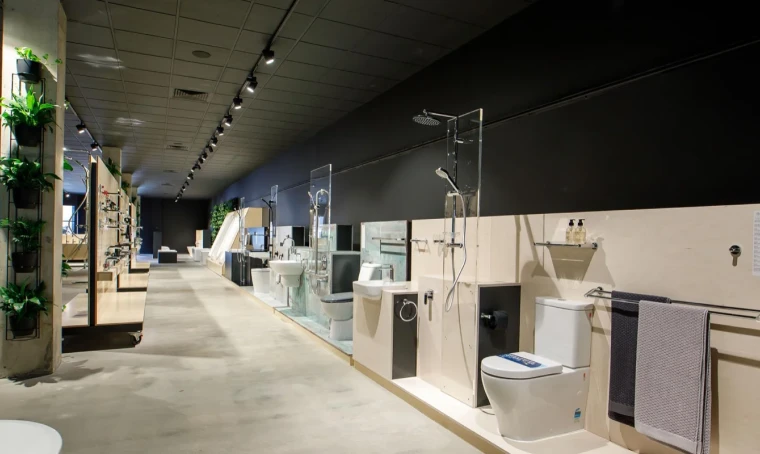You’ve got a software project that you’re ready to bring to life. Awesome! This is an exciting time, and you may be chomping at the bit to get things rolling.
However, before you jump in, you’ve got to decide on something else—the software development methodology that will guide your project. Believe it or not, that decision could make or break your product in the end.
Software development methodologies are strategies for organizing teams around the goal of designing, building, testing, and releasing software. The methodology you use can make an impact on your costs, how easily you can adapt to changes along the way, how much input you can incorporate from other departments, early users, key stakeholders, and other factors.
Two very different approaches to software development are Waterfall and Agile. They’re great to compare and contrast because they’re very different. While many popular methodologies are variations on Agile these days, Waterfall (a top-down, linear approach) stands in stark contrast to Agile’s (flexible and iterative) approach.
Understanding the Agile vs. Waterfall divide will help you wrap your head around your options, and it will help you to choose a software development methodology that works for your project. This blog post will give you a high-level understanding of both methodologies, and it will help you decide which one will work best for your project.
What is the Waterfall Methodology?
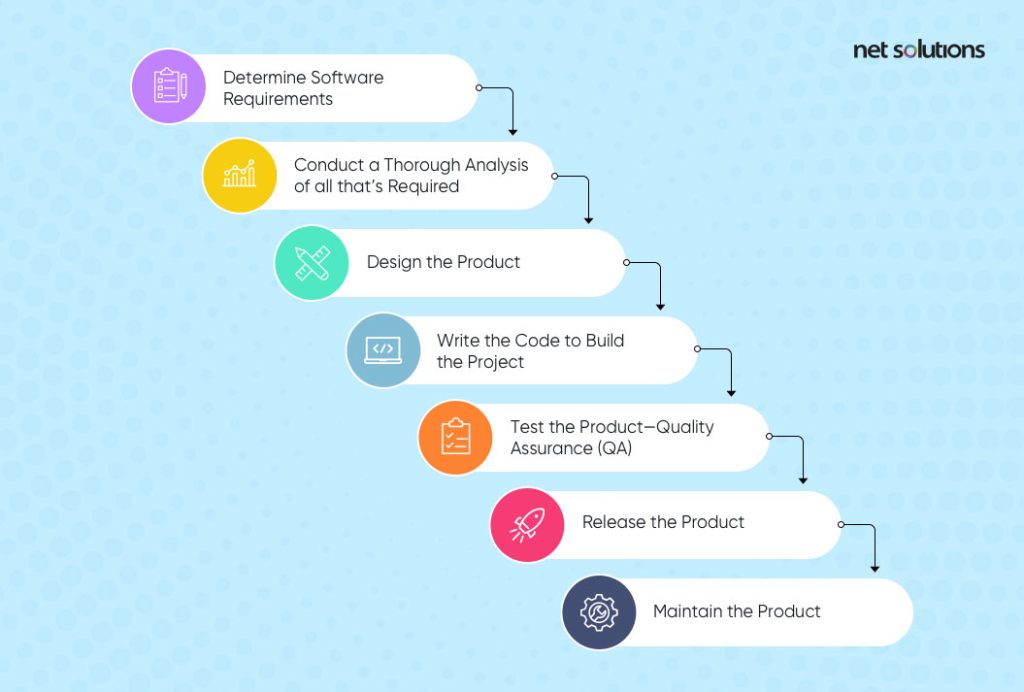
Waterfall is a software development methodology that breaks down the entire development process into linear steps. Created in the 1960s (ancient history in the software world), Waterfall makes intuitive sense to people outside the software industry because it works the way you’d expect traditional projects to work.
For example, if you wanted to build a custom house from scratch, you’d first meet with an architect who would listen to your input and draw up blueprints. The architect would pass the plans along to builders who would lay the foundation, construct the frame, add electrical wiring, etc., all in straightforward, sequential steps. Once they’re done, you’d (hopefully) have the exact house you envisioned from the start. Barring any unexpected problems, it would fall roughly within the budget you set from the start.
Similarly, if you used Waterfall to guide your software project, you would follow a linear path that looks something like this:
- Determine software requirements
- Conduct a thorough analysis of all that’s required
- Design the product
- Write the code to build the project (implementation phase)
- Test the product—Quality Assurance (QA)
- Release the product (take it live)
- Maintain the product (fixing errors and making improvements as needed)
Step-by-step project management seems pretty logical, right? Planning ahead and sticking to a rigid structure makes perfect sense when you’re building a house or manufacturing a physical product, that’s for sure. After all, if you’re halfway finished with a house and decide you want a bigger kitchen and a smaller guest room, you’ve got to tear down some of the work you’ve done and start over on those areas. It’s going to cost money and time to make that change.
When it comes to software, however, all bets are off. That’s because modifying one feature that will greatly improve the product won’t necessarily impact the others, and you can make changes on the fly (based on user feedback, input from other departments, and testing). That’s where Agile comes in.
It’s easier to make those changes if you choose a more flexible methodology like Agile. And there are some distinct benefits to remaining flexible, which we’ll cover below.

We respect your privacy. Your information is safe.
What is the Agile Methodology?
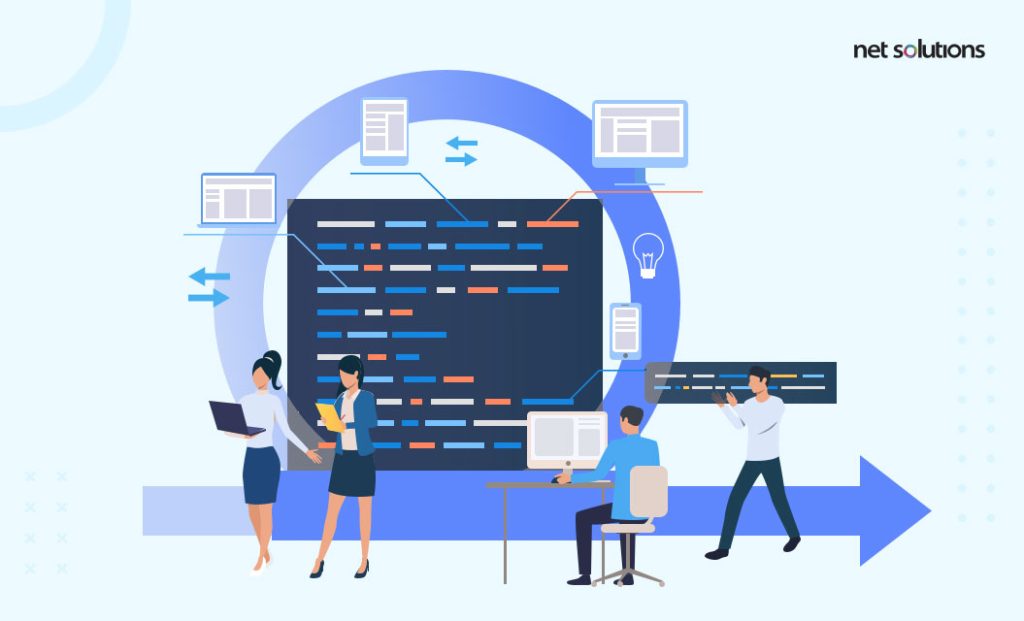
Agile is a software methodology designed for flexibility and adaptation. Agile development teams work in short sprints (usually periods of a week or two) to develop different elements of a software product. Small teams test the features and receive input from the client, other internal teams, and user testing to see what works and what they can improve.
The worst thing you can do with a two-year project is giving the customer exactly what they wanted on day one. – Mike Cohn, Author of Agile Estimating and Planning
That may sound crazy to an architect who designs homes, but in software, it often makes sense because:
- It’s often hard to envision what a final product will look like based on the wireframes
- We may think we know what users want, but you may learn new things after testing
- Clients, developers, designers, and UX specialists will stumble across better ideas throughout each iteration
The Agile methodology is flexible enough to incorporate feedback from everyone involved, and it often results in a superior product. It also allows startups to work with a minimum Viable Product (MVP) approach, which is a bare-bones software product that engineers revise based on user feedback. That way they’re not wasting months building features that their target audience doesn’t want or need.
Waterfall vs Agile Methodology: Pros and Cons

Naturally, there are advantages and disadvantages to both approaches. If the Agile vs Waterfall debate were one-sided, and one methodology worked for every team and every software product, then it would have slipped into obscurity like Myspace and Beanie Babies.
What are the Benefits of Agile?
Agile is a powerful methodology that has been used to produce countless software products you know and love. Here are some of its advantages:
- Flexibility and Adaptability: The Agile approach is amazingly flexible, allowing software developers to incorporate input from other departments (Designers, Business Analysts, UX professionals, executives, etc.) along with users and clients (in cases where a client has outsourced their project to a dedicated software team.
- MVP-friendly: Agile works well for developing a Minimum Viable Product that will evolve based on user feedback.
- Customer-centricity: Thanks to its adaptability, it’s easier to deliver products that end-users love.
- Cross-functional Alignment: By involving experts from different departments in each stage of development, Agile promotes shared ownership of the project. For example, unlike a Waterfall approach, where Designers hand the project over to the Engineers and largely let it go, Agile Designers can work with the Engineers to refine implementation. This promotes a shared commitment to creating superior products.
- Greater Transparency: Agile’s iterative approach encourages greater transparency, with teams less likely to disappear down the rabbit hole until their deliverables are due.
What are the Disadvantages of Agile?
Of course, all that flexibility does come at a price. Here are a few of the disadvantages of Agile.
- Harder to Pin Down Budgets: All that iterating, rethinking, and rebuilding based on feedback is valuable, but it’s harder to predict how much it will cost in the end. That’s not to say Agile developers can’t keep costs under control—we use Agile all the time here at Net Solutions and we stay within budget—but if you want exact deliverables at a specific price, Agile might not work.
- Client Involvement: Some companies that hire dedicated development teams want a hands-off approach, reviewing results only at key transitions. Others like being involved at every step, giving feedback along the way. Agile works great for the latter, not so great for the former.
- Potential to Lose Focus: Agile’s iterative approach can lead teams astray without strong collaboration and communication.
What are the Benefits of Waterfall?
Waterfall may not be as popular as Agile these days, but it has its benefits. The advantages to using Waterfall include:
- Budget Control: A top-down plan with clearly defined deliverables makes it easier to predict how much a project will cost. That’s often helpful for government institutions with strict deliverables and budgets.
- Less Demand on Client: For those who outsource their development, a Waterfall approach might be ideal if they want to take a more hands-off approach.
- Whole System Approach: Since a Waterfall approach outlines all the deliverables from the start, designers and engineers can develop every component to fit perfectly with the larger whole. This can lead to a more integrated product.
What are the Disadvantages of Waterfall?
The downsides to Waterfall include:
- Rigidity: Waterfall’s inflexible structure doesn’t lend itself to suggestions for improvement from clients, other departments, and end-users. The only modifications typically come after testing, which takes place near the conclusion of the project.
- Less Customer-centric: It’s difficult to adopt an MVP model when using a Waterfall methodology, which means software products are designed and built based on what companies think their customers want. Even if they have good Voice-of-the-Customer (VoC) data telling them what users say they want, it’s something else entirely to see how users respond to features in the wild.
- Department Siloes: Without Agile’s cross-functional teams and inter-departmental communication, Waterfall can lead to a fragmented approach to product creation.
Agile vs Waterfall: Key Differences
The following chart outlines the key differences between the Agile and Waterfall methodologies.
| Overall Approach | Top-down & Linear Waterfall begins with a defined product plan, and everything moves sequentially from beginning to end. Different departments (e.g., Design and Engineering) only interact at hand-off points between phases. |
Incremental & Iterative Agile teams work incrementally, in short sprints (each sprint usually lasting a week or two), testing new features and getting feedback along the way—from different departments, users, and the client (when outsourcing). |
| Flexibility | Low Waterfall is rigid in its approach, with limited flexibility to change things based on feedback. |
High Agile is flexible by design, allowing teams to refine features based on feedback. |
| Focus | Project Delivery Waterfall focuses on delivering projects within budgets, based on a predetermined timeline. |
Product Optimization Agile’s primary focus is on creating optimal, user-centric products. |
| Requirements | Set at the Beginning In Waterfall, requirements are set at the beginning of the project. |
Set Daily Agile teams set their requirements every workday. |
| Budgetary Risk | Minimal Budgets are not likely to change much, since the project’s scope is clearly defined in the beginning. |
Moderate Budgets might change if the scope expands significantly. |
| Testing | Performed Post-build When using Waterfall, testing begins only after the development phase ends. Testing teams are not involved in reshaping requirements. |
Concurrent & Continuous Agile teams test during every sprint, gathering feedback to improve their build continuously. Testing teams can inform and revise requirements. |
| Collaboration | Limited Different departments rarely communicate except during hand-offs between phases. |
Extensive Teams collaborate and communicate regularly across departments. |
| Project Management | Dedicated Project Manager Waterfall’s strict, top-down system requires a dedicated project manager to oversee work at every phase. |
Managed Collectively There’s no need for a dedicated Project Manager, since projects in Agile are owned by the entire team. |
When to Use Agile vs Waterfall: 5 Questions to Help You Decide
Now that you’ve got a clear understanding of the difference between Agile and Waterfall, along with the pros and cons of each, it’s time to decide which methodology you should use to develop your software product. The following five questions will help you make a strategic decision.
Question #1: How involved will the “customer” be in the project?
If you’re hiring an outsourced development team, then in this case, you’re the “customer.” If you’re developing software based on a directive from management, then they’re your internal customer.
High-level of involvement: If the customer is actively engaged and interested in giving regular feedback, Agile could be a better choice.
Low-level of involvement: If the customer is more hands-off, then Waterfall could be a better choice.
Question #2: How broad is your scope, and are you open to adding or changing features along the way?
Wide scope: If your scope is broad and you’re interested in adding features based on new insights and feedback from different departments, end-users, etc., then Agile is probably the best choice.
Fixed scope: If your scope is predefined and narrow, with a specific set of features that are set in stone, then Waterfall is likely a better choice.
Question #3: Will you take an all-or-nothing approach to the product you want, or will you prioritize the most essential features?
Prioritizing Essential features: If you’re willing to prioritize certain essential features and modify others based on feedback (or save those features for later releases), Agile might work well for you.
All-or-nothing: If you will only settle for the exact set of features you envisioned at the design stage, Waterfall is likely ideal.
Question #4: Are you working with a handful of vendors, or do you have many different vendors who aren’t used to working together?
Handful of vendors: Agile works best when working with small, highly coordinated teams on a software project.
Many different vendors: When working with many different vendors, Waterfall has its advantages, since the vendors aren’t required to collaborate much.
Question #5: Do you have a fixed budget that you can’t deviate from?
Flexible budget: If your budget is more flexible and your primary goal is product optimization, Agile might work well for you.
Fixed budget: If your budget is fixed and unyielding, Waterfall may be a better choice.
Examples of Agile and Waterfall Projects
Here at Net Solutions, we’ve managed countless software projects over the years, and each time we tailor our approach based on the project’s unique set of demands. Here are a few examples of projects we’ve done in Agile, along with others we’ve done in Waterfall. We also provide links to corresponding in-depth case studies for those who want to learn more.
Agile Examples
Edplace
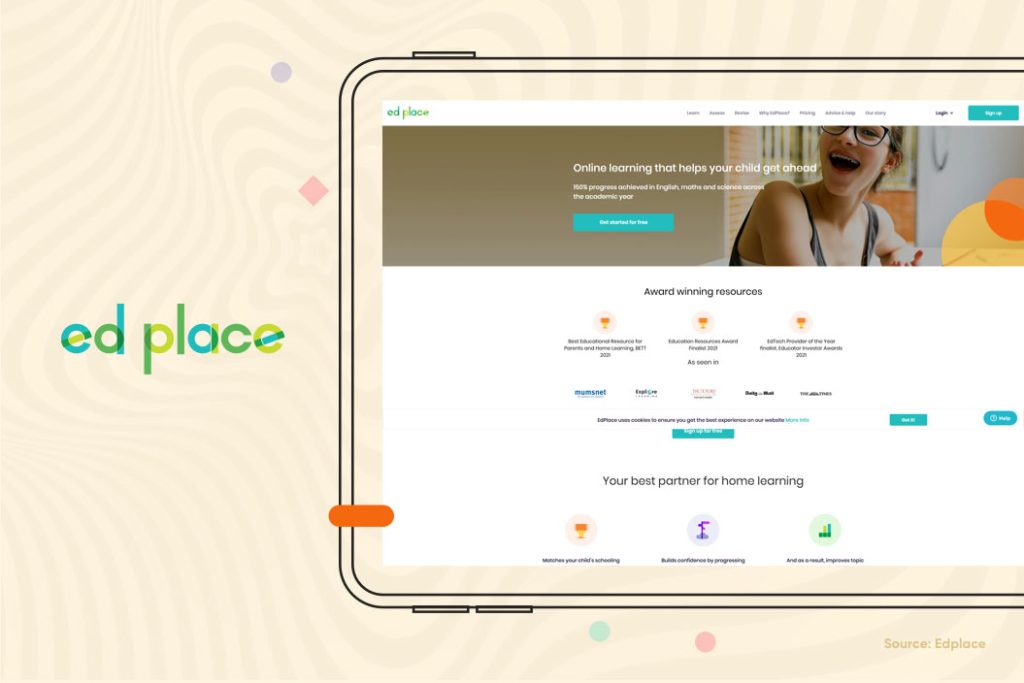
Edplace is a home-learning app for children, and the company hired Net Solutions to design and build an app that helps parents monitor their children’s performance. This led to a long-term engagement, where Net Solutions used Agile to continually improve Edplace’s digital products. Access the full story here.
Euro Car Parts
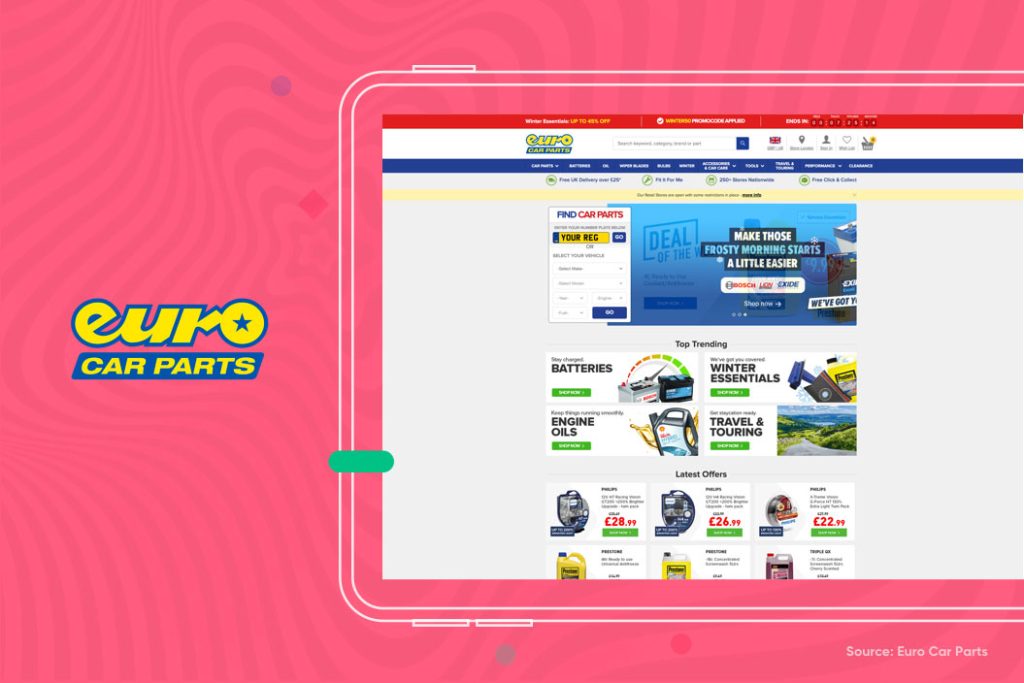
Euro Car Parts is the largest automotive parts distributor in the United Kingdom, and Net Solutions optimized their website for e-commerce success. You can read the full story here to learn more about this long-term engagement.
Waterfall Examples
FourFourTwo
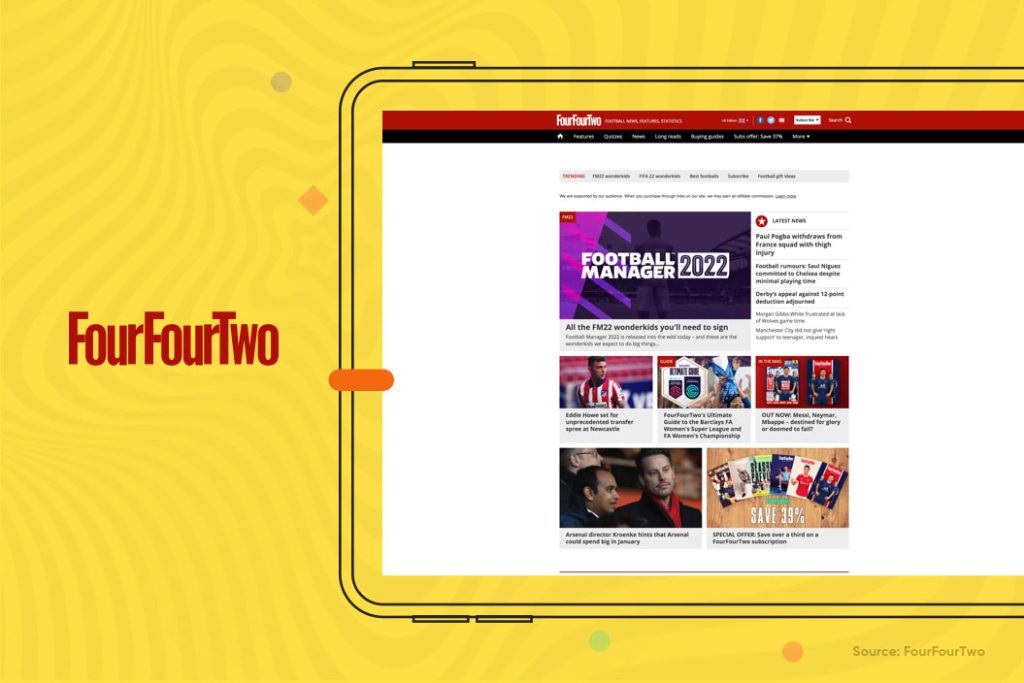
Scoff
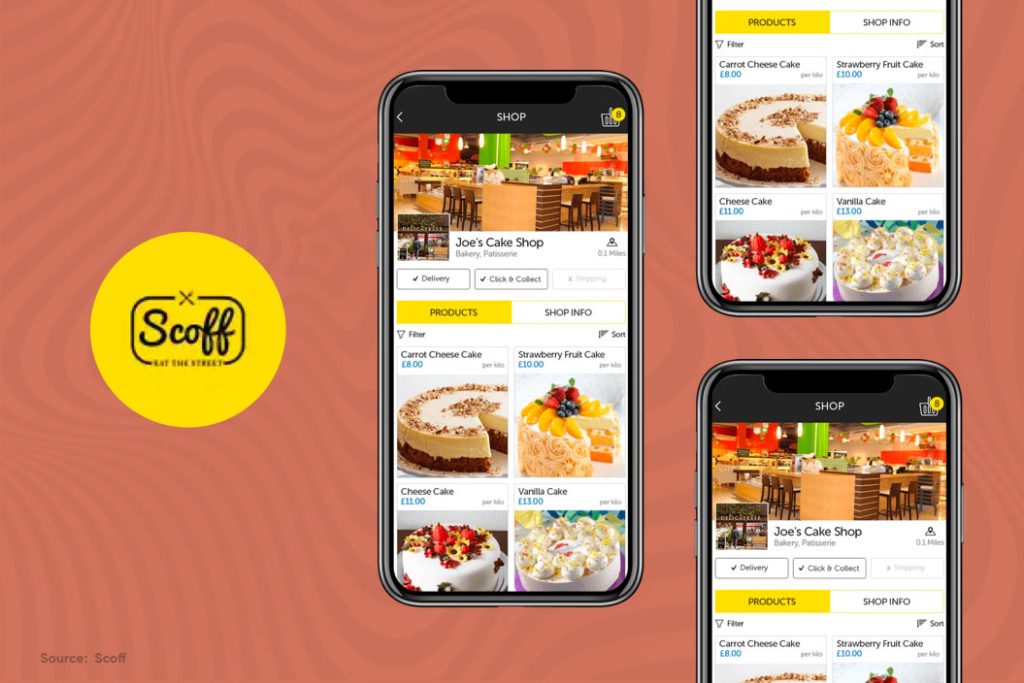
Net Solutions designed and built a unique, hyper-local food delivery app for two entrepreneurs on a fixed budget. Scoff was designed to serve local restaurants, whose menus changed regularly. Net Solutions used Waterfall to develop Scoff’s MVP, and you can read about the full story here.
Which is better, Agile or Waterfall?
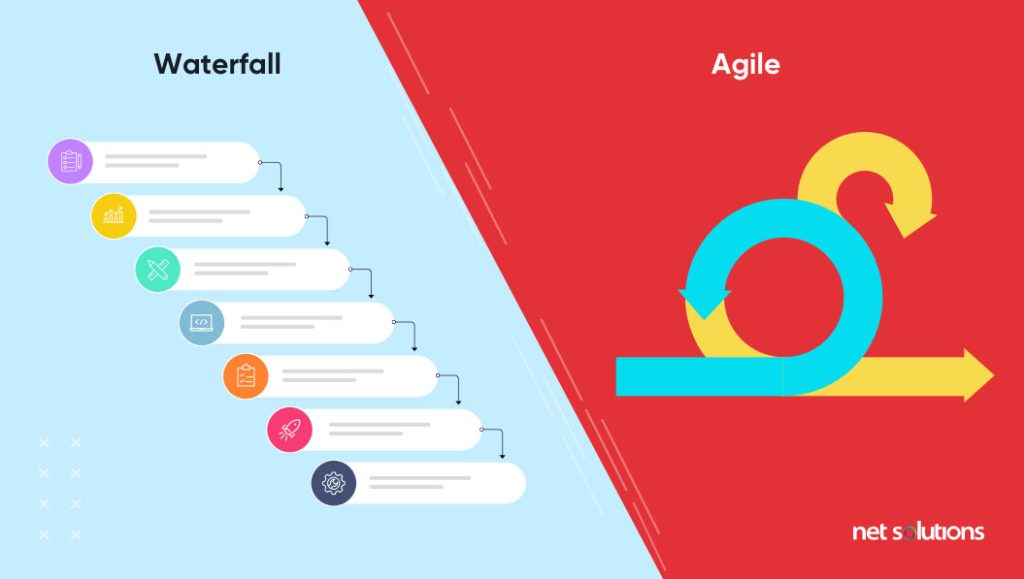
Agile is an incredibly popular methodology. While we use it frequently here at Net Solutions to design smartphone apps, web-based platforms, and other software products, there’s no clear-cut answer to the “which is better” question.
Choosing the right methodology for your software development project ultimately depends on your goals and your organization’s preferred approach. Methodologies are like tools in a toolbox. Some tasks require a hammer, others require a screwdriver, others require something totally different.
Carefully review your situation and discuss the pros and cons of Agile and Waterfall. Present all your stakeholders with this Agile vs. Waterfall comparison, and choose the approach that works best for your software project.



